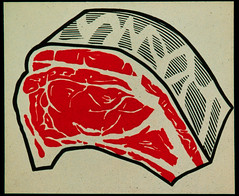January 19th –Brewing Molasses Porter
We brewed our brown ale a few weeks ago and it was ready to rack off and keg. Brown ale is a tough sell in the US. It used to be more popular in craft brew circles, but not many breweries are actually brewing one on a regular basis any more. It’s still an incredibly good beer with food, but it’s somehow dropped off most craft beer drinker’s radar screens. I like browns that are malty and slightly sweet and I generally prefer them in a moderate alcohol range. We generally make ours fairly low hopped and use a combo of English pale malt, 55L and 120L caramel malt, and some chocolate malt. We mash it fairly warm, maybe around 152-154, to emphasize the malt body. We tasted it when we racked it and it had a distinct smoky note, although we hadn’t added any smoked malt. Smoky aromas are often caused by phenols, and I was a little worried about the beer because of the phenol level. It appears to be dying down now that it’s kegged, but it’s not as clean as I’d like it. But it does have a faintly fruit estery note that you expect from a good English ale strain. On the palate, it’s got good body and a round sweet caramel character. It tastes bigger than it is (it clocks in around 5% alcohol). If the smoky note dies down, it’ll be a good session beer and a great beer for spicy food, since it’s got that great sweet caramel finish.
The brown ale was the second batch of beer with a London Ale strain that we were using (reputed to be the famous Young’s strain) and decided to repitch the yeast one more time. We were both almost out of stout, so we opted to do porter this time. By the BJCP, porter is broken into Brown Porter vs Robust Porter. The major difference between the two is gravity and roastiness. The brown porters are more English style. They tend to be lighter in alcohol, and have less roasted malt flavors, which tend to add a roasted astringency to the palate. The robust porters are more American in style and tend to be bigger, hoppier, and have more roast intensity. Our beer is kind of in the middle. We did lower hops, and less roast/black malt, but went for a moderately higher gravity that should give us a beer around 6-6.5%. We used a fair amount of crystal and caramel malts as well as chocolate, brown, and black malts, and mashed hotter again to get more body. We also added a couple of cups of molasses at the end of the boil. We’re hoping to get some dark, dried fruit flavors (like a raisiny quality) out of it. Should be ready to package in about two weeks. After that it’ll be time to brew more lambic.
Monday, January 21, 2008
January 19th - Brown Ale and Brewing Molasses Porter
Subscribe to:
Post Comments (Atom)

No comments:
Post a Comment